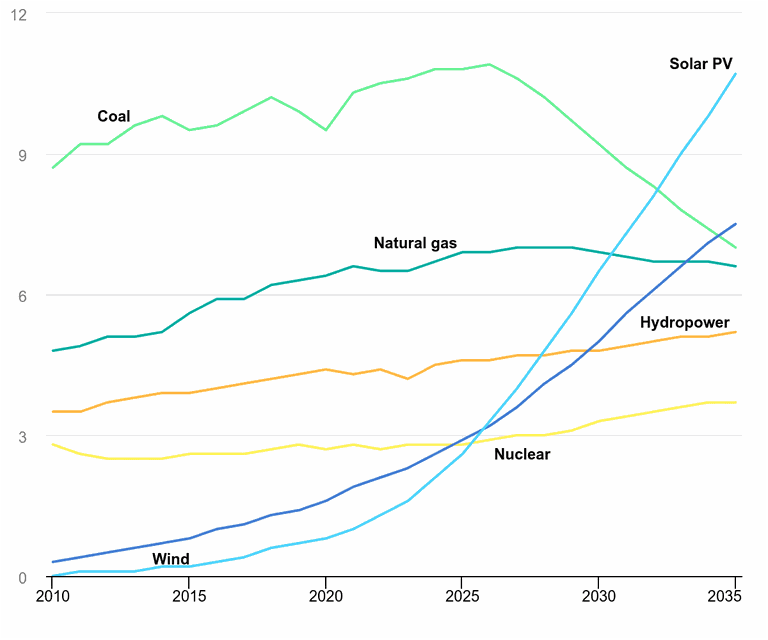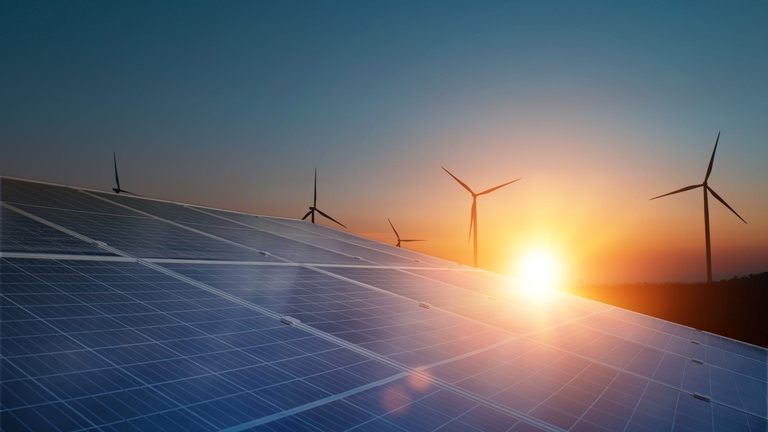https://www.lifegate.it/futuro-energia-rinnovabile
- |
- With the World energy outlook 2024, the IEA has clarified that the future of the global energy system is electric.Thanks to renewable energy.
- Current policies call for a 3 percent reduction in CO2 emissions from 2022 to 2030, but according to the IEA, CO2 would need to decrease by 33 percent by 2030 to align with climate goals.
The new one came out on October 16, 2024 World energy outlook of the International Energy Agency (IEA), the report that probably more than others offers an overview of the choices that governments and consumers face in a context of growing abundance of energy resources, both renewable and fossil.With theincrease in electricity demand, it becomes necessary redefine the concept of “energy security”:sustainable, clean, renewable energy is safer than that produced from fossil fuels.This is what the most authoritative source of global energy analysis and forecasts says.
Geopolitical tensions and regional conflicts are exposing the fragilities of the global energy system, highlighting the urgency of more incisive policies and significant investments to accelerate the transition towards safer and cleaner technologies.Investments in clean energy projects have reached nearly $2 trillion a year, almost double of the amount allocated to new supplies of oil, gas and coal.But that's not enough:if we want to limit the increase in temperatures on this planet, we must stop opening new fossil deposits.

Renewable energy:towards the age of electricity
Energy security has become a constant in geopolitical discourse since the Russian invasion ofUkraine.Such geopolitical challenges will be constant, they will be persistent, the report says, as will continued growth in energy demand.At the same time, there is a growing abundance of fuels and technologies:by the end of the decade, it is expected a surplus of oil and liquefied natural gas (LNG), accompanied by an overabundance of production capacity in some clean technologies, such as photovoltaics and batteries.This scenario – indicates the Agency – could push prices falling, providing relief to consumers and creating opportunities for policy makers to increase investment in the energy transition and reduce subsidies to fossil fuels inefficient.
Fatih Birol, executive director of the IEA, said:“In previous World Energy Outlooks, the IEA has clarified that the future of the global energy system will be electric, and today this is there for all to see.In the history of energy we have witnessed the era of coal and that of oil:Now we're moving fast towards the age of electricity, which will define the energy system of the future, increasingly powered by clean sources".
A crucial aspect of the report is the acceleration of the electrification of the global energy system.In the last ten years, electricity use has grown at double the rate compared to overall energy demand, driven largely by China, which alone accounted for two-thirds of this increase.Clean energy is entering the energy system at an unprecedented rate, with more than 560 GW of new renewable capacity added in 2023.
However, this growth is not uniform across technologies and countries.As mentioned, China has a key role in this transition:China's solar production alone is expected to surpass current US electricity demand by the early 2030s.Furthermore, the IEA highlights that i Countries in the global south face a severe funding gap to support a rapid and equitable phase-out of fossil fuels and urges wealthy governments to commit to a new global climate finance target at COP29.Already at this moment, China is towing the growth of photovoltaics in numerous developing countries.

The peak is not enough
Global demand for electricity will continue to grow in the coming years, requiring large investments in electricity infrastructure and storage systems.However, supporting infrastructure is not keeping pace with the energy transition: for every dollar invested in renewable energy, only 60 cents are allocated to networks and storage, when instead the relationship should be balanced.The security and resilience of energy systems are put at risk by extreme climate events, which make investments in more robust and secure networks even more urgent.
Despite progress, the world it is still far from reaching net zero emissions targets.Current policies call for a 3 percent reduction in CO2 emissions from 2022 to 2030, but according to the IEA, CO2 would need to decrease by 33 percent by 2030 to align with climate goals.The gap is clear and the need to accelerate the transition from fossil fuels to renewables is unavoidable.
The demand for oil, gas and coal will peak around 2030 in all scenarios envisaged by the Agency.Yet, despite the commitments made at COP 28 to abandon fossil fuels, the decisions of governments, investors and consumers often perpetuate weaknesses in the energy system current rather than orienting it towards a more sustainable future.The increase in electricity demand, initially expected for electric vehicles and heat pumps, is in fact exceeding expectations, with high demands coming from sectors such as air conditioning and data centres.
Without rapid reductions in emissions, global temperature rise will reach 2.4 degrees Celsius by the end of the century, well above the Paris Agreement goal of limiting warming to 1.5 degrees. There is a possibility of keeping the temperature increase within this threshold and this is only made possible thanks to renewable energy.The path mapped out by the IEA to stay aligned with 1.5 degrees would allow everyone to have full access to energy, halve premature deaths caused by air pollution, reduce energy bills, ensure safer energy systems and avoid the worst devastation climatic.
To achieve these goals, it is essential immediately end the expansion of oil, gas and coal, but this requires clear political will.The current political direction, however, seems to be going in the opposite direction:Nearly 200 trade measures have been introduced globally since 2020, most of which are restrictive, covering clean energy technologies, compared to 40 adopted in the previous five years.
